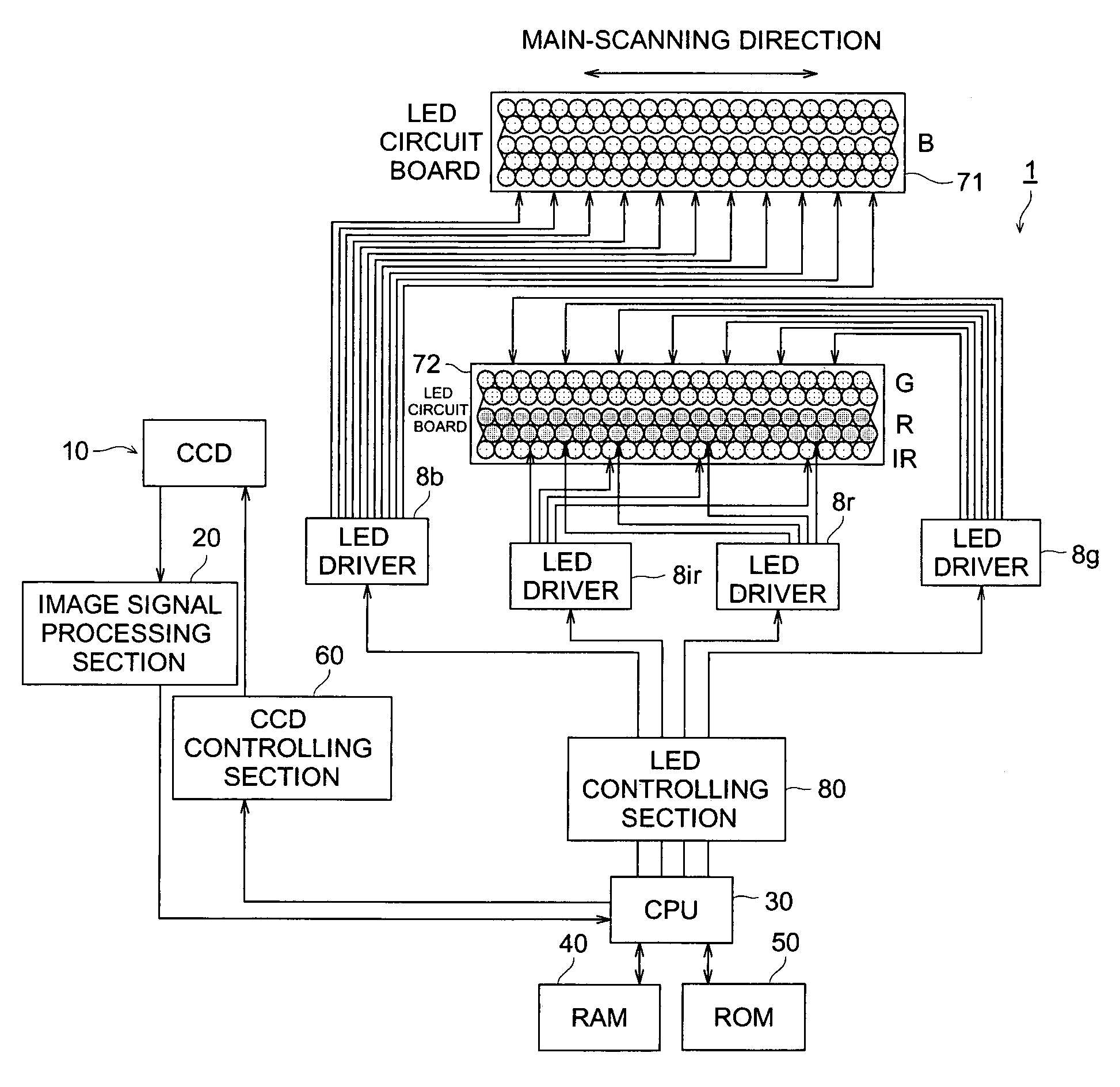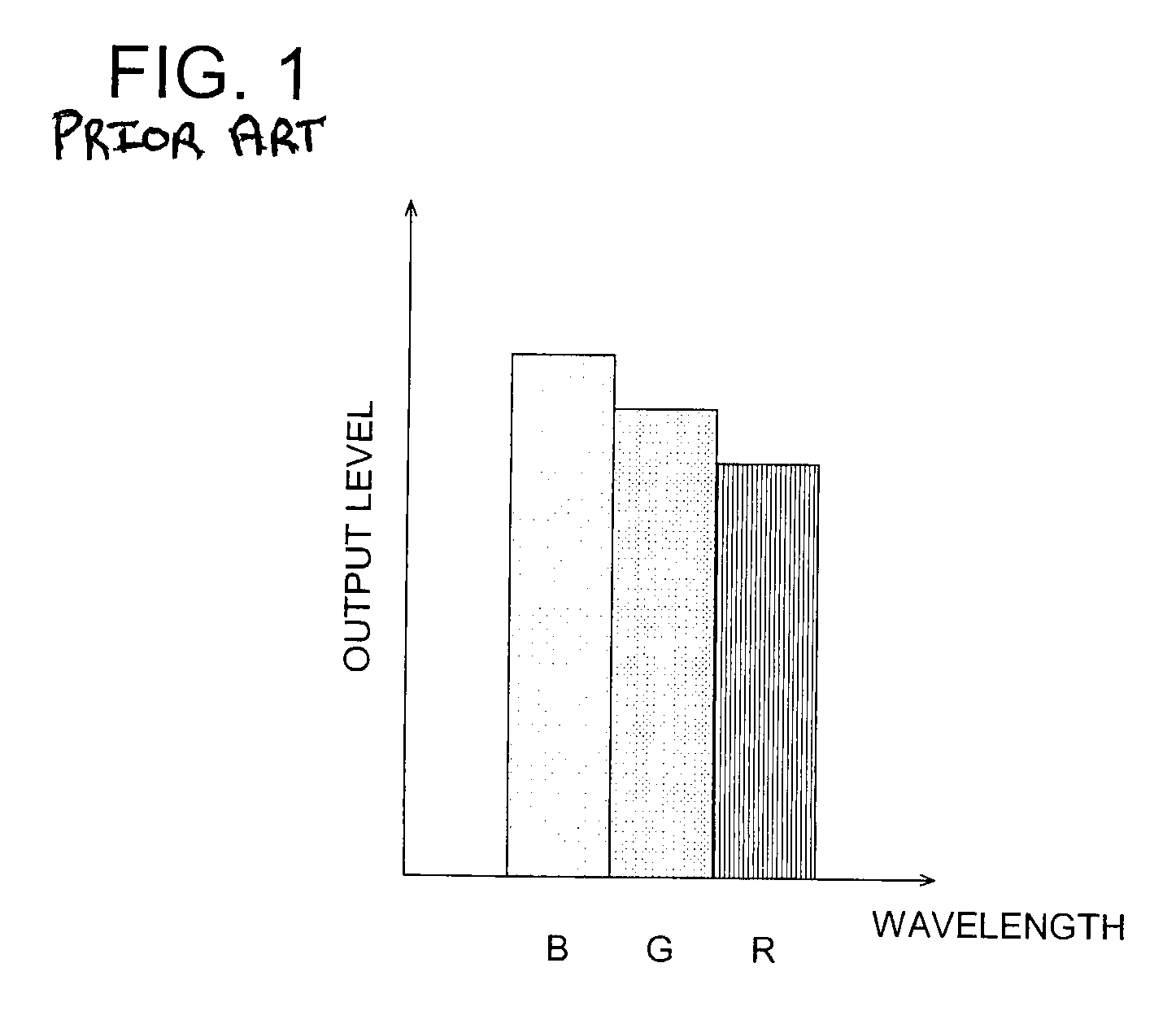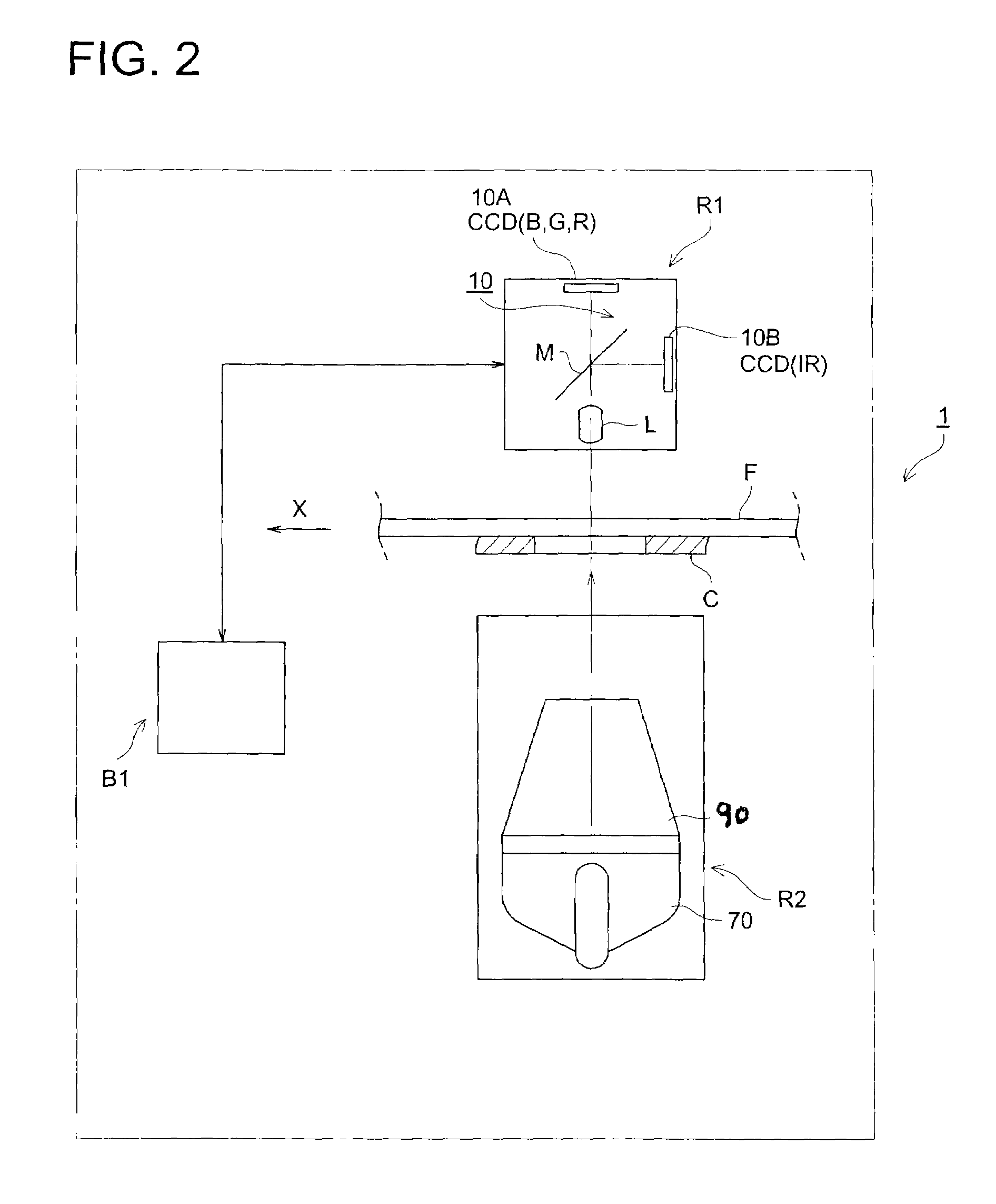Image-reading apparatus
a technology of image-reading apparatus and reading device, which is applied in the direction of lighting and heating apparatus, optical radiation measurement, instruments, etc., can solve the problems and inability to control a light emitting amount for every color, so as to prevent the deviation of detected values, prevent the deterioration of color balance of output image, and prevent the effect of deterioration of color balan
- Summary
- Abstract
- Description
- Claims
- Application Information
AI Technical Summary
Benefits of technology
Problems solved by technology
Method used
Image
Examples
first embodiment
[0047]As shown in FIG. 4, in the first embodiment, reading control means B1 controls the CCD operation so that the centers of the photo receiving times of colors R, G, B, IR coincide with each other during one scanning time interval. It is applicable either to make the center of the photo receiving time coincide with that of one scanning time or not to make.
[0048]When the base penetrated light amounts are exhibited as shown in FIG. 1, reading control means B1 adjusts not only the photo receiving amounts by lengthening the photo receiving times in order of B→G→R corresponding to the output levels decreasing in order of B→G→R, but also the center of the photo receiving time corresponding to the scanning operation for the photographic image. Further, since the light source of the halogen lamp, etc., generally exhibits a high intensity of infrared light, the photo receiving time is set at a short time to avoid the saturation of the CCD.
second embodiment
[0049]As shown in FIG. 5, in the second embodiment, reading control means B1 conducts the photo receiving operation for each color CCD by using a plurality of pulses over one scanning interval to control it so that the integrated value of each data of the photo receiving amount becomes a photo receiving amount necessary for each wavelength region. Further, as shown in FIG. 5, one scanning interval is divided into right and left regions, and the borderline, at which a pulse area of the right region is equal to that of the left region, is established as a center time point of the pulse integrated value. In this photo receiving operation for each color CCD, it is applicable either to make the center time points coincide with each other or not to make.
[0050]Further, it is also applicable that reading control means B1 conducts a controlling operation, so that, within a light receiving time in a wavelength region, in which a light receiving time for making the light receiving amount neces...
third embodiment
[0081]In the third embodiment, reading control means B1 independently controls the start and stop of the light emitting action of the each color LED. As shown in FIG. 8(d), reading control means B1 controls the CCD operation so that the centers of the photo emitting times of colors R, G, B, IR coincide with each other, while maintaining the light emission output levels of colors R, G, B, IR at level E. It is applicable either to make the center of the photo emitting time coincide with that of one scanning time interval or not to make. According to this embodiment, the center of the photo emitting time of each LED is located at the same time point within one scanning line d (in FIG. 8, t1=t2, or t1≠t2). Accordingly, since the center of integrating the distribution of light receiving amount received by the light receiving means for each color overlaps with that of another color, it becomes possible to prevent the deviation of the detected value of the density of the read image for eve...
PUM
 Login to View More
Login to View More Abstract
Description
Claims
Application Information
 Login to View More
Login to View More - R&D
- Intellectual Property
- Life Sciences
- Materials
- Tech Scout
- Unparalleled Data Quality
- Higher Quality Content
- 60% Fewer Hallucinations
Browse by: Latest US Patents, China's latest patents, Technical Efficacy Thesaurus, Application Domain, Technology Topic, Popular Technical Reports.
© 2025 PatSnap. All rights reserved.Legal|Privacy policy|Modern Slavery Act Transparency Statement|Sitemap|About US| Contact US: help@patsnap.com



